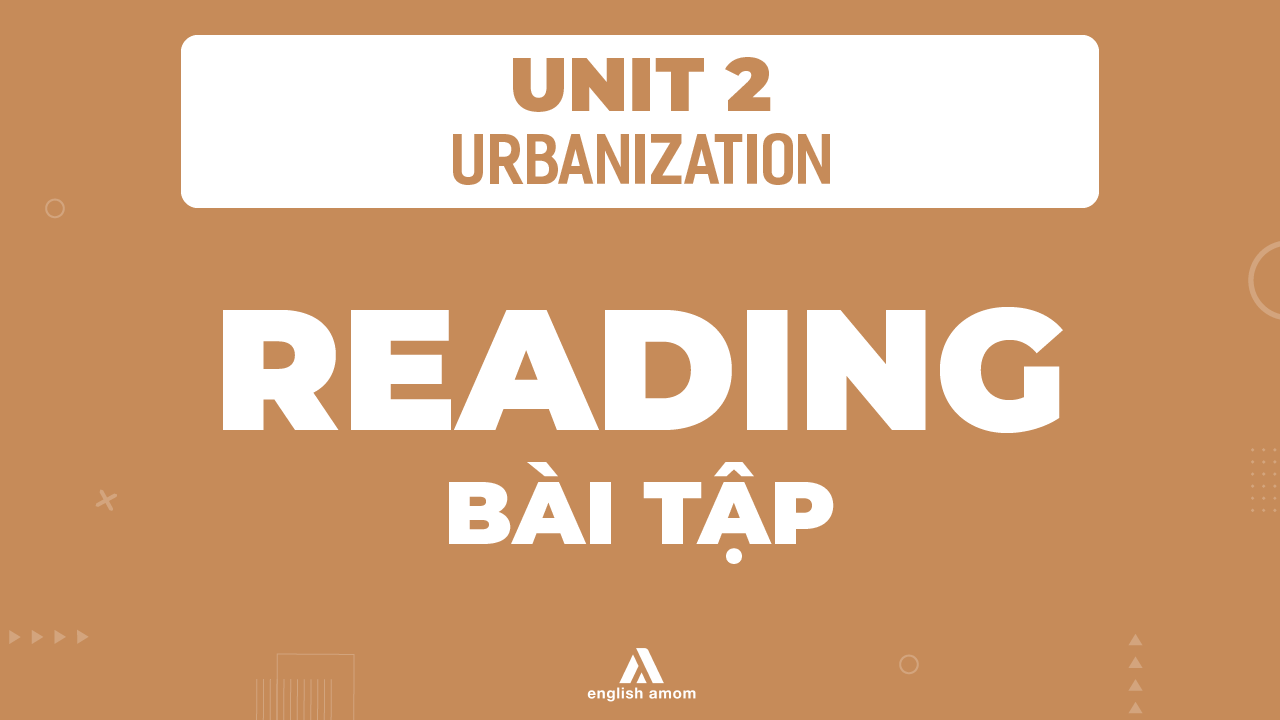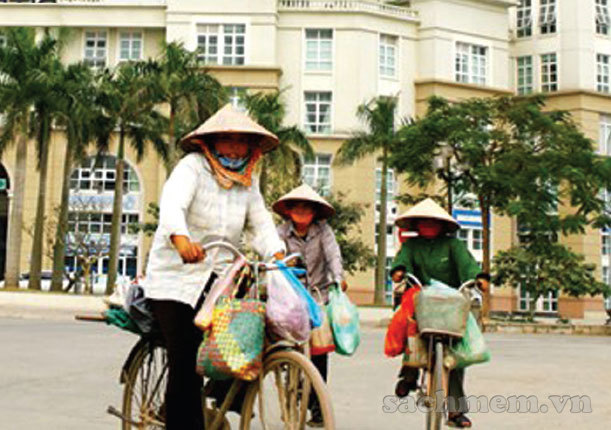
► Kênh hỏi đáp và giải thích thắc mắc kiến thức MIỄN PHÍ → truy cập LINK NHÓM: ENGLISH AMOM
► Kênh YOUTUBE hệ thống toàn bộ bài giảng CLIPS: truy cập LINK: ENGLISH AMOM CHANNEL
► Kênh TIKTOK: ENGLISH AMOM
READING
Urbanisation and its causes

1) You are going to read a text about urbanisation. Predict whether the following statements are true (T) or false (F).
| T | F | |
| 1. Urbanisation happened first in more economically developed countries, then in less economically developed countries. | ||
| 2. Urbanisation has increased in rich countries since 1950s. | ||
| 3. Lack of resources in rural areas is one of the factors leading to urbanisation in less developed countries. | ||
| 4. The standard of living in cities and rural areas is more or less the same. | ||
| 5. By 2050, more than two thirds of the world's population are expected to live in urban areas. |
ĐÁP ÁN:
| 1 – T | 2 – F | 3 – T | 4 – F | 5 – T |
2) Read the text and check your predictions in 1.
Urbanisation is the process by which urban areas grow bigger as more and more people leave the countryside to live in towns and cities.
Before the 1950s, urbanisation mainly occurred in more economically developed countries (MEDCs). Rapid urbanisation happened during the period of industrialisation in Europe and North America in the nineteenth and early twentieth centuries. A lot of people left their home villages for urban areas hoping to find jobs in the rapidly expanding industries in big towns and cities. Since 1950s urbanisation has become slower in most MEDCs. Now, some of the biggest cities are losing population because people go back to live in rural areas. This is known as counter-urbanisation.
Since 1950, urbanisation has grown rapidly in LEDCs (Less Economically Developed Countries) in Africa and South America. Between 1950 and 1990 while the urban population in LEDCs doubled, increase was less than half in developed countries.
There are various causes of urbanisation in LEDCs. Here are some major ones. First, people migrate to urban areas on a massive scale due to lack of resources in rural areas. Second, small farmers find it h to make a living not just because of bad conditions such as drought, floods, or storms, because they can't compete with large agricultural companies. These are considered ‘push’ factors.
People living in rural areas are also ‘pulled’ to cities, which are known to be places of financial centres, services, wealth and opportunities. Believing that standard of living in urban areas will be higher in rural areas, many people come to the city seeking their fortune.
Today, about half of the world's population in urban areas. Urbanisation has provided opportunities, higher incomes and better access to health facilities and education. The urban population will continue to grow and it is expected that proportion will increase to 70% by 2050.
3) Find the words in the text that have the following meanings. Write the words in the space provided.
| 1. becoming larger in size or amount | .................................................................... |
| 2. the movement of people out of cities to the surrounding areas | .................................................................... |
| 3. became twice as big or twice as many | .................................................................... |
| 4. a rise in size, amount or degree | .................................................................... |
| 5. go to live in another area or country | .................................................................... |
ĐÁP ÁN:
| 1. expanding | 2. counter-urbanisation | 3. doubled | 4. increase | 5. migrate |
4) Read the text carefully. Answer the following questions.
1. What is urbanisation?
2. What do MEDCs and LEDCs stand for?
3. Where did rapid urbanisation take place prior to 1950? Why?
4. What happened after 1950?
5. What are some of the 'push' factors of urbanisation?
6. Why are small farmers' lives difficult?
7. What are some of the ‘pull’ factors of urbanisation?
ĐÁP ÁN:
1. It's a process by which urban areas grow bigger as more and more people leave the countryside to live in towns and cities.
2. MEDCs stands for more economically developed countries. LEDCs stands for less economically developed countries.
3. Before the 1950s, rapid urbanisation took place in Europe and North America because it was the period of industrialisation in these areas.
4. After 1950, urbanisation started to grow rapidly in LEDCs.
5. Some of the ‘push’ factors of urbanisation are lack of resources in rural areas, bad weather conditions, and competition from large agricultural companies.
6. Because they have to suffer bad weather conditions and competition from large agricultural companies.
7. Some of the ‘pull’ factors of urbanisation are the centralisation of resources such as money, services, wealth and opportunities as well as the higher living standards of these areas.

